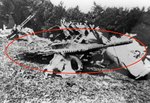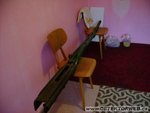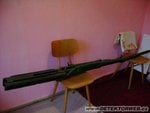seesul
Senior Master Sergeant
One of 8 B-17´s shot down on August 29, 1944 in our area had a 20 mm cannon onboard! B-17G, serial # 42-31885,MACR8099, crash site Vyskovec.
A friend of mine found 20 mm shells at the crash site last year, then we noted a strange gun on the historical picture (attached) and this week I´ve found out this cannon still exist (pic attached, taken from Fragmenty z B-17G – Detektor web.cz detektory kovù!!!
More at 20 mm cannon aboard a B-17G???
A friend of mine found 20 mm shells at the crash site last year, then we noted a strange gun on the historical picture (attached) and this week I´ve found out this cannon still exist (pic attached, taken from Fragmenty z B-17G – Detektor web.cz detektory kovù!!!
More at 20 mm cannon aboard a B-17G???






